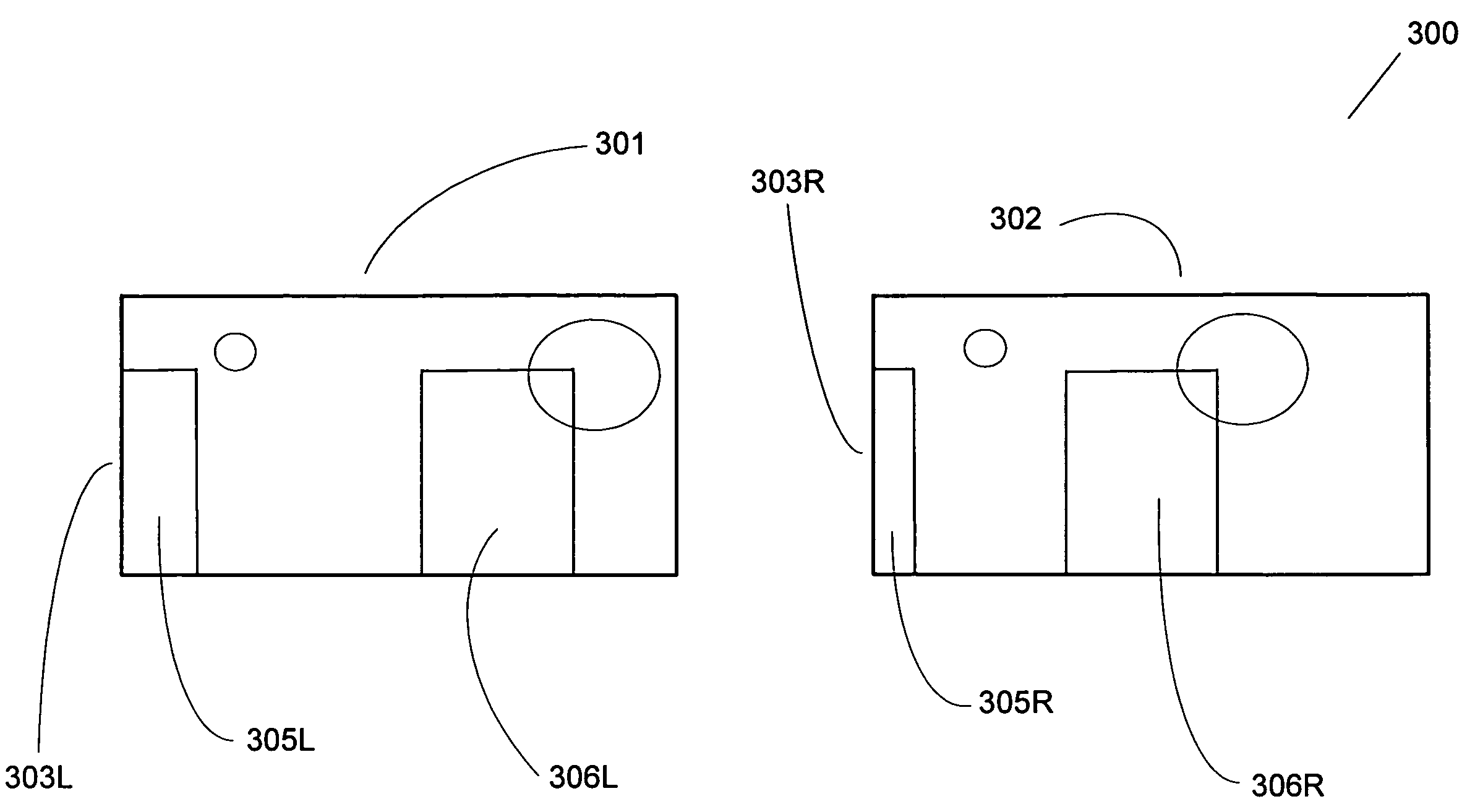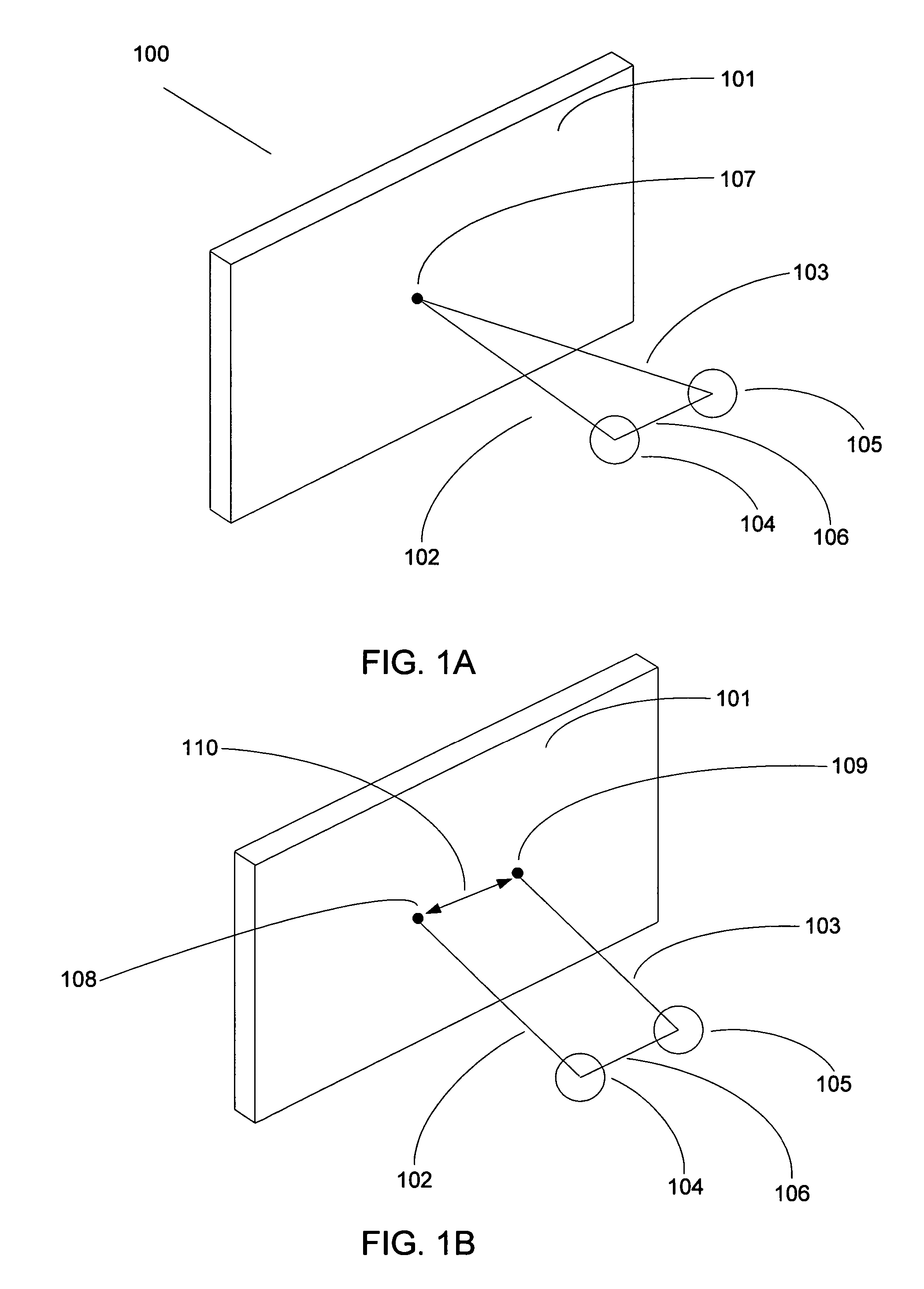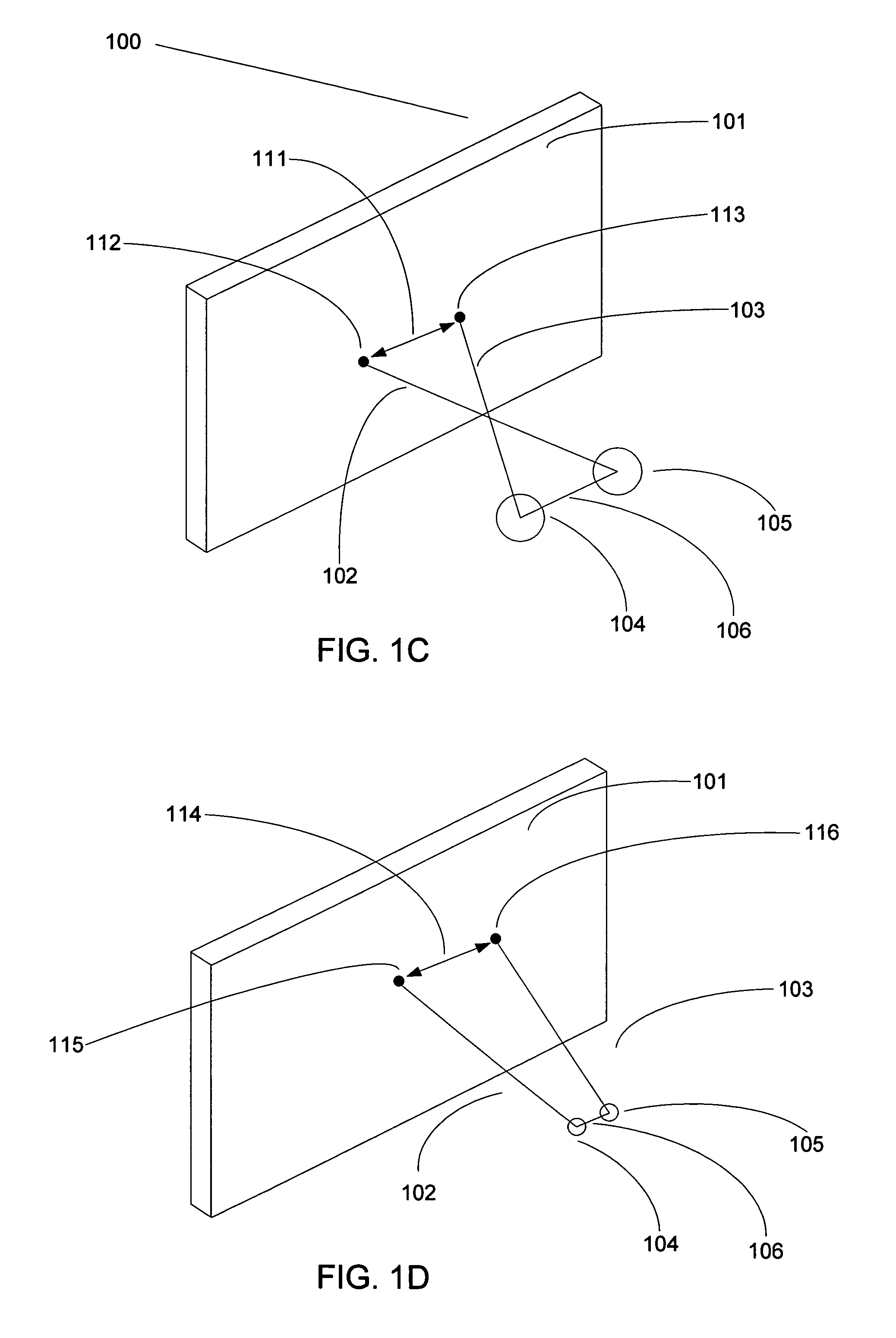Vertical surround parallax correction
a parallax correction and vertical surround technology, applied in the field of vertical surround parallax correction, can solve the problems of reducing the visual effect of the stereoscopic image, affecting the visual effect, and causing stress or discomfort, so as to reduce the parallax effect, enhance the visual effect, and enhance the image
- Summary
- Abstract
- Description
- Claims
- Application Information
AI Technical Summary
Benefits of technology
Problems solved by technology
Method used
Image
Examples
first embodiment
[0045]The first embodiment, illustrated using FIGS. 3A, 3B, 4A, 4B, and 4C, stretches either or both of the left and right edges of either or both of the images of the stereo pair (for example, stretching one edge of one stereo pair element, and stretching the opposite edge of the other stereo pair element), causing the parallax values to gradually decrease over the screen area adjacent to the surrounds' vertical edges at a measured rate so as to be unobtrusive. This edge stretching tends to reduce the troublesome negative parallax values to at or near a zero value. In other words, the system can adjust or stretch one of the images of the stereo pair so that its image points are more in correspondence with the other perspective view's image points. The result is that negative parallax is reduced to zero or near zero by setting the convergence of the image in such a way that the zero parallax location departs from a plane in camera space and is made to vary as a function of screen lo...
second embodiment
[0059]The second embodiment uses image morphing of one or both of the images of the stereo pair to cause the parallax values to gradually decrease over distance at a measured rate to be both unobtrusive and reduce the troublesome negative parallax values to zero or nearly zero adjacent to the screen surround. This embodiment in effect reduces the entire parallax extent of the region adjacent to the surround to zero since the morphing approach causes all image points to correspond thereby flattening the image. This flattening of the image, or controlled reduction to planar, at the vertical surround region, serves to eliminate the conflict of cues.
[0060]In order to reduce overall parallax, specific scene elements are represented in both the left-eye and right-eye views with corresponding left and right points brought into correspondence by means of an image morphing process. All such homologous points are made to correspond by mapping and matching respective horizontal positions. As c...
PUM
 Login to View More
Login to View More Abstract
Description
Claims
Application Information
 Login to View More
Login to View More - R&D
- Intellectual Property
- Life Sciences
- Materials
- Tech Scout
- Unparalleled Data Quality
- Higher Quality Content
- 60% Fewer Hallucinations
Browse by: Latest US Patents, China's latest patents, Technical Efficacy Thesaurus, Application Domain, Technology Topic, Popular Technical Reports.
© 2025 PatSnap. All rights reserved.Legal|Privacy policy|Modern Slavery Act Transparency Statement|Sitemap|About US| Contact US: help@patsnap.com



